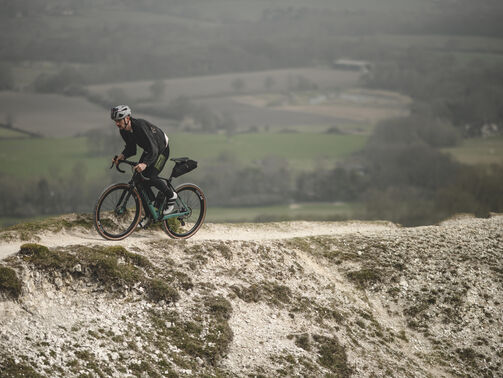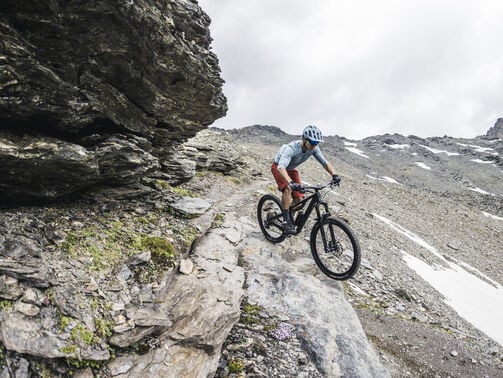Best Bikepacking Bags
Our guide to the best bikepacking bags will help you pick the perfect setup for backcountry rides and commutes.
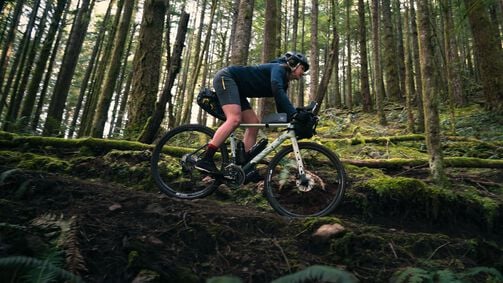
From full-suspension trail bikes to lightweight gravel racers and everything in between, bikepacking bags allow riders to add extra storage to nearly any bicycle without the use of racks and panniers. Through different combinations of handlebar bags, frame bags, seat bags and accessory bags, riders can put together the perfect kit for every two-wheeled adventure. It all comes down to a balance of three questions: How much gear will you carry? What type of riding do you plan to do? And what is your budget? Using those three metrics, we’ll break down the best bags for bikes.
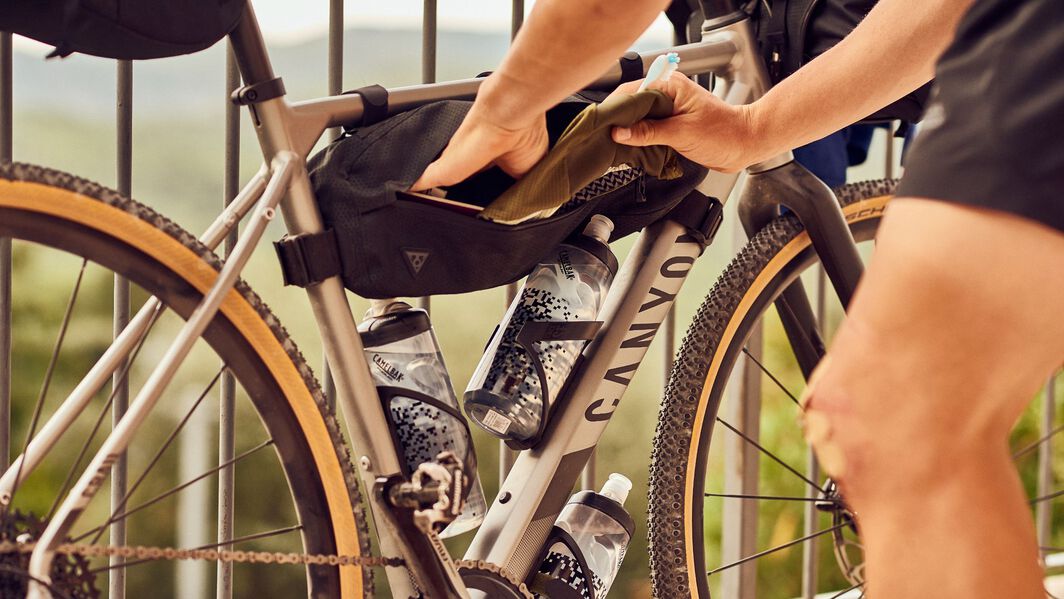
Frame Bags
How much gear will you carry? If you’re going for a multi-day ride and need to bring your tent, sleeping bag, camp stove, etc., you’ll need a lot of storage space and frame bags are a great place to start. Depending on the type of bike you’re riding, frame bags offer a lot of packing volume.
Road, gravel, and hardtail mountain bikes like the Endurace, Grail, Grizl and Exceed, have big frame triangles with room for high-volume bikepacking bags. This makes it easy to pack for a multi-day trip, as a larger frame bag has room for a full water bladder, food, and some outer layers. Packing heavier items at the bottom of a frame bag is a good move as it lowers the bike’s centre of gravity and improves stability while riding.
When choosing a frame bag, it’s important to find the dimensions of the pack and pay attention to where the straps attach to the frame. Most manufacturers have specific sizing details so all you have to do is measure the tube lengths on the inside of your frame triangle and select a bag size that matches. To make full use of your bike’s front triangle, the best option is to buy or build a custom bag made to your bike’s exact dimensions – but a custom bag can be pricey. A more affordable choice is to use a half-frame pack that only takes up space just below your top tube. Half-frame bags offer a surprising amount of additional storage while still allowing room for two water bottles.
When it comes to full-suspension mountain bikes, frame bags are a bit trickier and offer less storage volume. A bike like the Neuron is a great choice for a more remote bikepacking trip on technical singletrack, but due to the rear shock it only has space for a much smaller frame bag.
This means you’ll want to find more space in your handlebar bag and seat pack or figure out what gear to leave at home.
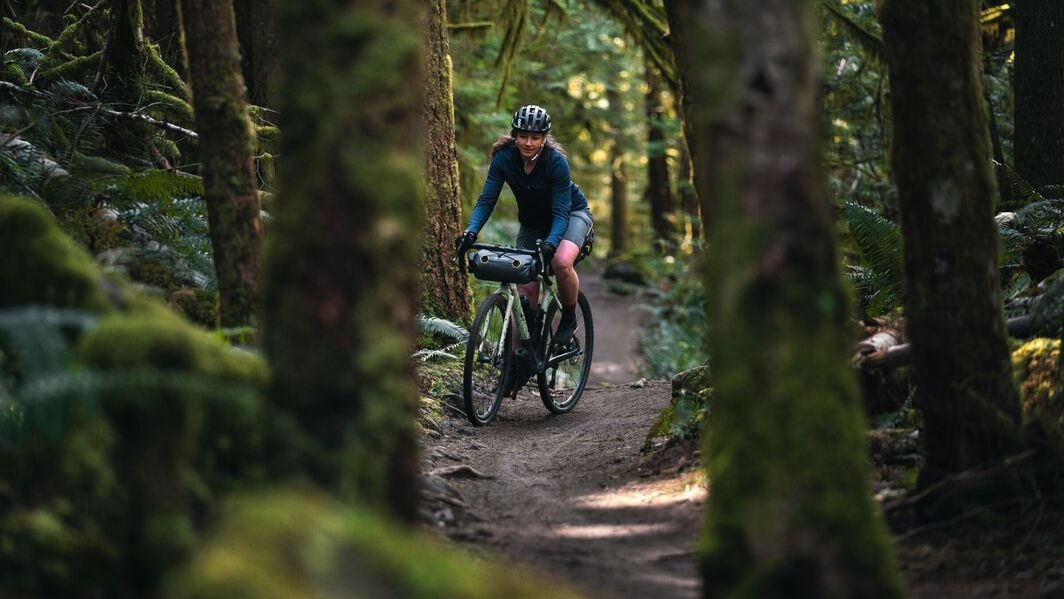
Handlebar Bags
Handlebar bags, or front rolls, are versatile and come in a wide array of sizes. Relying on two durable straps to secure the bag to your handlebars, a quality pack will also have a third strap at the bottom to fasten the bag to the frame and prevent it from bouncing in tough terrain. A small (two litres or less) handlebar bag makes the perfect lightweight addition to a race-ready road or gravel bike by simply adding some space for little things like snacks or a phone. For longer trips on drop bar bikes, a 2 – 10 litre mid-size bikepacking bag provides a solid amount of storage while still maintaining a low profile that can rest between the drops. Going up in size, most 15 litre or larger handlebar bags are designed to fit the front of flat bar mountain bikes. That voluminous capacity comes in handy when gearing up for longer trips in the backcountry.
While bikepacking-specific bags work wonderfully, they come with a heavier price tag. A great budget option for a handlebar bag is to simply take a waterproof dry bag or compression sack and lash it to your handlebars using ski straps. It’s not the most elegant solution and it takes time to get right, but it is a great way to get started. A worthy middle ground is to buy a bikepacking harness. Handlebar harnesses enable you to securely attach a variety bags to the bike’s handlebar and even allow you to secure multiple bags for seriously long trips. Be careful not to put too much gear into your handlebar bag as significant weight on the front of the bike can begin to compromise its handling.
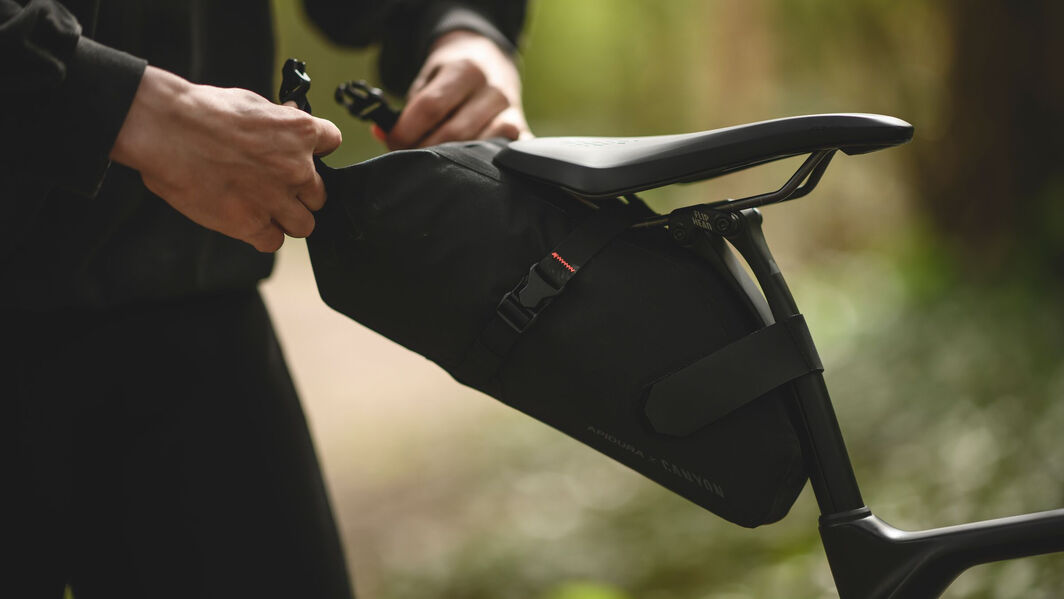
Seat Bags
While many bikepacking bags are relatively new, seat or saddle bags have been a staple on bikes for decades. Seat packs run straps through the rails of your bike’s saddle and then use another strap on the seatpost to keep them secure and stable. A simple saddle bag is a great way to carry a spare tube and some tyre levers, while XL-sized packs can be used to load up things like camp stoves and sleeping bags.
When looking at seat packs, it’s important to think about the type of riding you plan to do and how much you plan to pack, as many bags tend to swing back and forth once they’re weighted down. For example, if you’re planning a mountain bike trip and want to use the dropper post on your Grand Canyon or Spectral, you’ll need to find a smaller bag with a special mounting bracket that functions with a dropper post and is and rigid enough to reduce swing when riding technical descents. Some seat packs even have special rails that attach to your frame to stop swing entirely! If you’re less worried about swing and more concerned with volume, it’s possible to find some large seat packs with capacities as high as 17 litres.
As with frame and handlebar bags, the ready-made and waterproof bikepacking bags tend to be the best, but they also come at a higher price. Seat bag harnesses give you the option of using your existing dry bags and if you’re feeling really DIY it’s always possible to lash a compression sack to the underside of your saddle and seatpost using ski straps.
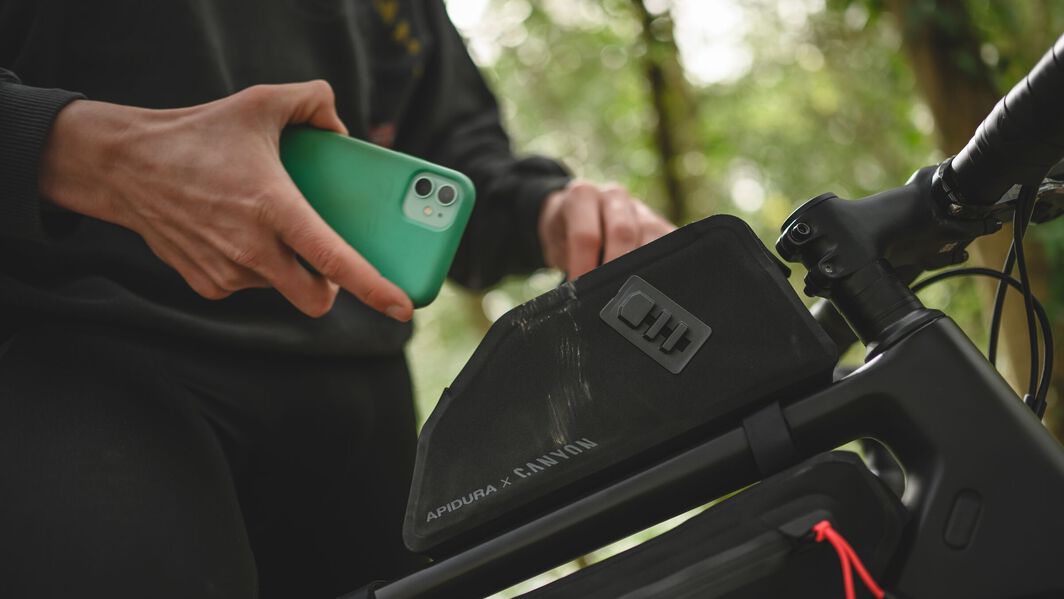
Accessory Bags
Smaller bags that can mount to your stem, handlebar, fork and even your downtube can be great options to expand the storage capacity of a complete bikepacking bag setup or simply add some space for easy-to-reach snacks riding the roads or commuting to work.
Stem bags, or snack pouches as they are often called, use small straps to attach one side to your bike’s stem and the other side to the back of your handlebars. Stem bags are excellent for loading up with things that you want to access quickly. Whether that’s an extra water bottle, snacks or even a small camera. A good stem bag can add useful storage space to any bikepacking setup.
Top tube bags, or fuel tanks, are bags that attach to the bike’s top tube and then are often secondarily secured to the stem or at the other side of the frame at the seatpost. Like stem bags, top tube bags are great for storing small things that need to be accessed easily. They’re perfect for holding a cell phone a wallet or even a small Bluetooth speaker.
Fork bags and down tube bags are another option for riders looking to push their storage capacity even further. Some specialized touring or gravel bikes have braze-ons on their forks for mounting additional cages and bags, but even without those, there are clever third-party solutions that can create extra mounting points for your fork and enable you to bring along additional cargo cages and bags. There are even special bags that can be strapped to your bike’s downtube for even more storage in an unused spot.
The best bikepacking bags are those that help you go where you want, ride the terrain you like and pedal as far as you need to. So, think about how you want to ride and hopefully this guide will help you pick the ideal bikepacking setup.
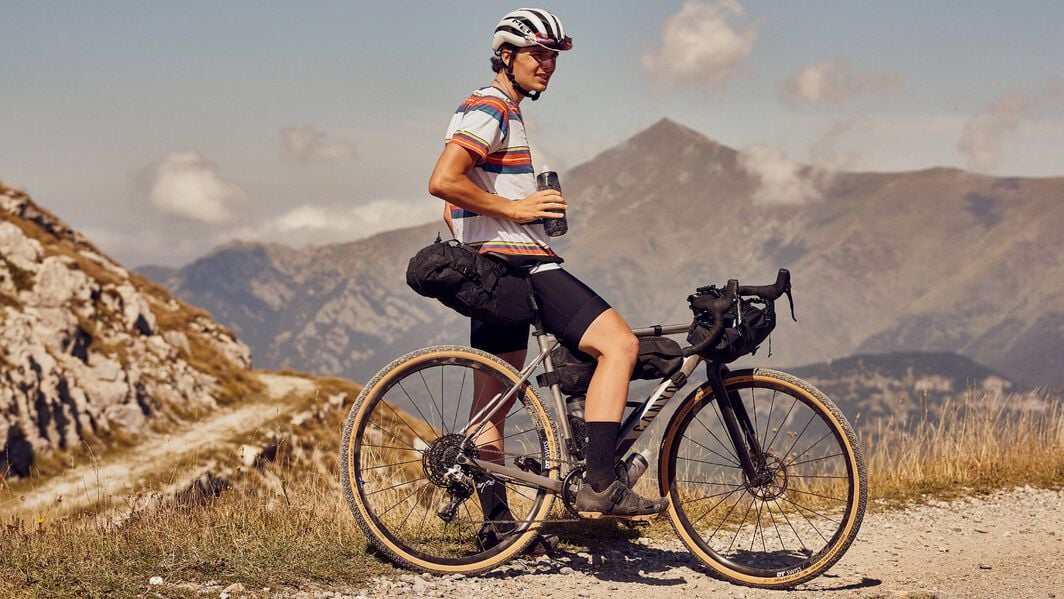
Did this article help?
Thank you for your feedback
